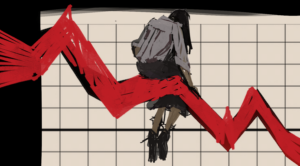By now, you have probably heard it mentioned at least a dozen times. You pretended like you understood what was being said. Or even if you were not pretending, your understanding of Bitcoin was nothing more than that it was just “internet money.”
Bitcoin’s code has been in the wild since its mysterious mastermind, going by the pseudonym Satoshi Nakamoto, open-sourced it in 2009. Open-source software is code that is publicly available for viewing and modification. The Microsoft Office suite, for instance, would not be considered open-source software because there is no way to see the code behind it.
Whereas fiat currencies—those regulated by governments—depend on central banks for supply and valuation, and on banks for identity and balance verification, the bitcoin ecosystem sidesteps all of that through what is called the blockchain database. This distributed database is a record of all bitcoin transactions in history compiled into blocks. If this database was a book, the blocks would simply be the pages. Therefore, in theory, every bitcoin—each of the 15.2 million of them as of February 2016—is traceable from its creation through all the transactions that it’s used in, and, theoretically, in perpetuity.
If you have been reading closely, you will realize that we have not yet even defined what a bitcoin is. But in truth, there is nothing that one can point at and say, “Hey, look! A bitcoin!” Not even some kind of a digital file. What exists is the ledger that contains the details of transactions among different addresses in the network. Those addresses, however, have balances associated with them that increase or decrease depending on the direction of the transaction.
Every bitcoin address has an associated private key that is used to sign off on
transactions. Without this key, the balance at that address is useless. When a transaction is takes place, it is announced to the whole Bitcoin network, which is just a collection of all the computers running the Bitcoin software.
Here is where the “mathemagics” starts. Every 10 minutes or so, all outstanding transactions that have been announced have to be verified and grouped together into one block in a process called mining. Here, however, mining involves solving an extremely difficult mathematical problem. In essence, miners across the network are in a race to find the solution to this problem so that the transactions can be made into a block.
But why would someone spend so much on expensive hardware and electricity bills to do that? Well, the first computer that solves the problem and adds the new transactions to the blockchain is rewarded with bitcoins. Twenty-five of them to be exact. And that, ladies and gentlemen, is how bitcoins are made! But the reward will be halved to 12.5 bitcoins by June of this year, and then halved again four years later. That means it will be increasingly harder to mine bitcoins, until it becomes impossible once there are 21 million of them in circulation. It is expected that that limit will be reached sometime around 2140. Once that limit is reached, the miners will no longer be mining, but will, instead, be charging transaction fees to reward themselves for solving those hard problems. This arbitrary limit and its implications are the subject of much debate, and, frankly, too far out in the future to be of real substance to us.
Instead, we want to know if Bitcoin has had any substantive impact on the way we perceive and use money, and whether it is a techno-fad whose end-days are just behind the corner.




